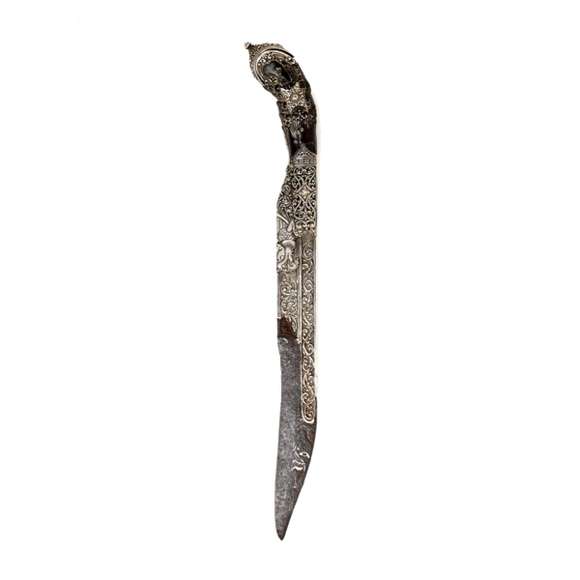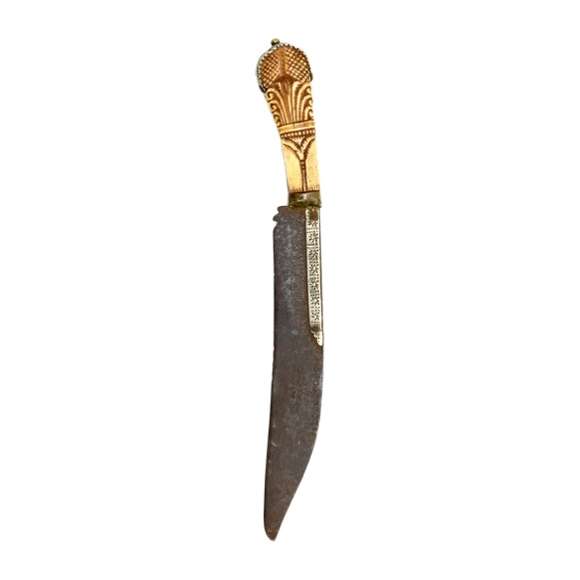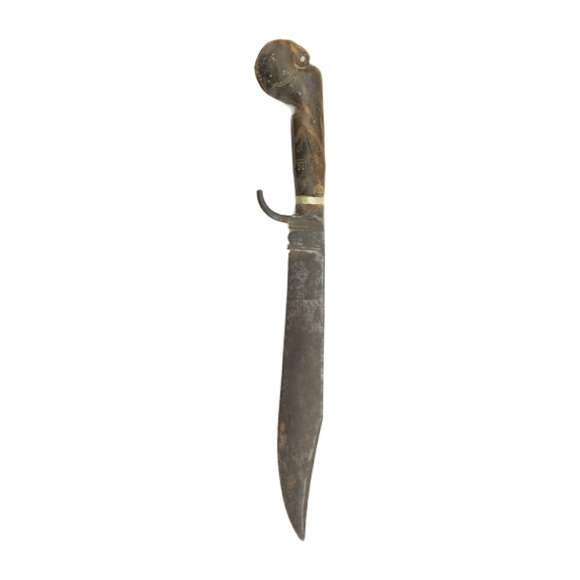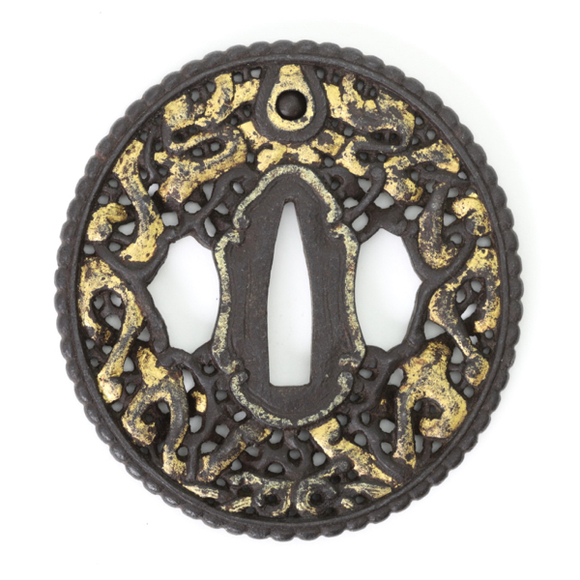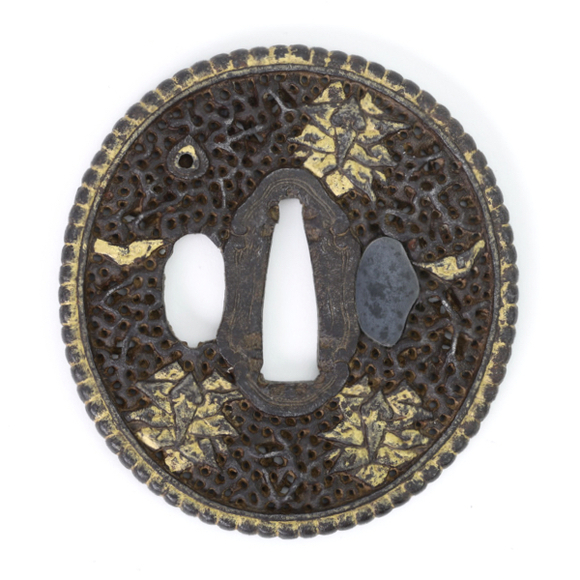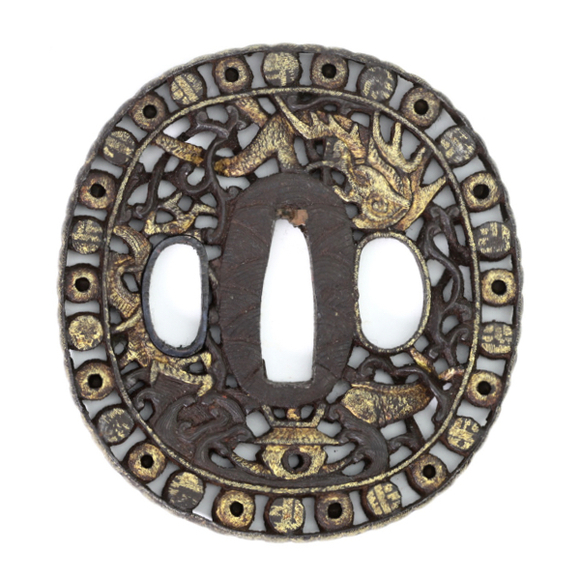Of nice quality, with unusual openwork silver bolster with serapendiya.

Sheathed 31.5 cm
Knife 29.2 cm
11.5 cm
Knife 282 grams
Iron, silver, yellow metal
Black coral (Antipathes orichalcea), non-CITES listed
Kingdom of Kandy
Sri Lanka
Circa 1750-1800
European collection
Introduction
Often called piha-kaetta, which are actually the chopper versions, these knives were mainly made by the King's Workshops in Kandy called Paṭṭal Hatara or "Four Workshops":
"The best of the higher craftsmen (gold and silversmiths, painters and ivory carvers, etc.) working immediately for the King formed a close, largely hereditary, corporation of craftsmen called the Paṭṭal-Hatara (Four Workshops); These men worked only for the King, unless by his express permission (though, of course, their sons or pupils might do otherwise); they were liable to be continually engaged in Kandy..."
-Ananda Coomaraswamy, 1908
Silver-mounted pihiya were presented to Adigar (minister-governors) when promoted to their positions. Others were made as diplomatic gifts.
In making these, or any art for that matter, the Sinhalese craftsman was not interested in expressing his own person; he was attempting to express his culture in the best possible way. Competition between makers was thus not in coming up with more creative designs but instead focused on ever finer execution of their traditional patterns. The height of this work was reached in the 18th century, and by 1815, production was seized when the kingdom fell to the British.
This example
A classic example with a thick iron blade with clipped tip section. Both sides of the base of the blade, and its single fuller, are carved with designs and then plated with silver sheet. It has a copper alloy bolster. This unknown alloy looks like brass but unlike brass it somehow doesn't tarnish. The bolster has characteristic curls called liya pata that represent a stylized bird's tail. The black coral hilt scales are plated with several ornamental silver plates and a pommel plate.
The scabbard is made of carved wood, with a silver-plated top section with fine filigree.
Condition
The knife is in good condition. A small bit of silver is missing at the spine of the blade. Two small ornaments on the right side of the pommel are later replacements but excellently made.
The scabbard wood is in great shape. The silver, unfortunately, was badly damaged.










Canton work for the Japanese market, with 28 metal balls in separate compartments.

